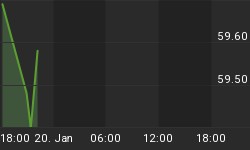"Restricting or eliminating the [ETF] business will not solve the sovereign debt crisis in Europe, will not balance the US budget, will not restore bank balance sheets, will not add jobs, and will not repay consumer debt and get them spending again. There are very large, very real uncertainties that are driving global financial market volatility."
~Eric Noll's testimony before the Securities Subcommittee of the Senate Banking Committee
In the froth of all financial innovations, fact becomes blurred with fiction. The evolving ETF story has been no different. Recently, however, the froth has lathered itself into a crescendo of misinformation. Indeed, the last year reads like a thriller novel -- an imprisoned rogue ETF trader from a Swiss bank, a US congressional hearing and, even globe-trotting stock picker Mark Mobius has taken a swipe at ETFs¹.
Most of the mud-slinging focuses on ETFs' ostensible link with "unprecedented" market volatility. While these claims have enriched the ETF narrative, critics are confusing causality with correlation. Fortunately, these imagined aspects are wearing down, leaving exposed the bare facts.
The real culprit of increased volatility? By far, it is driven by human responses to global macro instabilities, not the emergence of ETFs or any other investment vehicle ... "mutual" funds included. Consider the following counterpoints:
• Volatility spikes are nothing new. Like maple syrup for Canadians, "animal spirits" -- that colorful name Keynes gave to human overconfidence -- are a staple of financial markets. In periods of prosperity, this naive optimism naturally leads to higher complacency and a broad underestimation of risk. However, these are the timeless and essential ingredients for surges in volatility, as instabilities "unexpectedly" surface (when, in fact, they have likely been building for some time).
Looking at the chart, the misuse of the term "unprecedented volatility" since 2008 is apparent. We have been here before. In fact, the peak in market volatility dates back to "Black Monday's" crash of 1987 -- prior to ETFs' foray into financial markets. Several macroeconomic events since then have triggered episodes of similar magnitude. Extending this chart further back would also reveal comparable volatility spikes and regime changes.
• ETF data is non-correlated with volatility. The growth in ETF assets shows no correlation to broader market volatility. Looking at the period 2000 - 2005 is illustrative. The chart shows total ETF assets under management rising from USD 74.3 billion at year-end 2000 to more than USD 400 billion by the end of 2005. At that same time, volatility was moving in the opposite direction -- trending lower. Since then, total ETF assets steadily marched higher to USD 1.45 trillion, yet volatility has been ... well, volatile -- again showing no correlation.
What's more, in today's globalized financial markets, volatility measures -- whether taken in the US, Japan or Europe -- are all highly correlated. Yet, the ETF spaces have developed very differently in these regions and account for very different ratios of domestic market capitalization.
•Periods of increased volatility correspond with regime changes. In financial markets, a law of excess applies. Prices -- and emotions -- tend to run to extremes. Capital becomes braver in bull markets and more timid in bear markets. And, like the present, volatility becomes more pronounced as uncertainties remain stubbornly high. In fact, this has been the case since the turn of this century.
Not surprisingly, this corresponds with the onset of the current secular bear period. Since 2000, intraday price volatility of 4% or more occurred at 6 times the average frequency during the 1960 - 2000 period². Expect this trend to continue as we enter the third period -- the most emotionally charged -- of the current secular bear. Importantly, these are trends clearly unrelated to ETF development.
•Volatility soars on government wings. It is no secret that government activism has surged since the onset of the global financial crisis. But, less known, is that deficit-driven economies will experience more frequent bursts and lapses in growth, speeding up the cyclical rhythms compared to "normal" cycles. Why? Because private sector driven expansions typically produce organic, sustainable, and long-lasting recoveries. Government-fueled expansions do not.
The above observation is closely correlated with trends in volatility. Currently, world economies have trouble returning to "normal" growth, despite enormous monetary and fiscal stimulus. 2010, 2011 and 2012 witnessed a similar pattern. The year begins with hopeful expectations (driven largely by renewed stimulus initiatives) and, by mid-year as growth fades, pessimistic outlooks and attendant volatility resume. This merely reflects the tug-of-war between economic realities and increasingly frantic policy responses. Expect these episodic surges in volatility to continue.
What to make of the above? In short, "macro" continues to matter. During periods of heightened volatility like today, security prices are largely driven by big picture factors. That leads to shared fundamentals and higher correlations among individual securities -- a key reason for the booming popularity in ETFs. In this environment, the static 60/40 portfolio construct is increasingly dissonant with economic and financial realities. A better approach dynamically allocates by risk factors, instead of rigidly clinging to traditional asset class definitions.
Endnotes:
1. http://business.financialpost.com/2011/10/25/brace-for-volatility-and-beware-etfs/
2. Data from the New York Times.

















